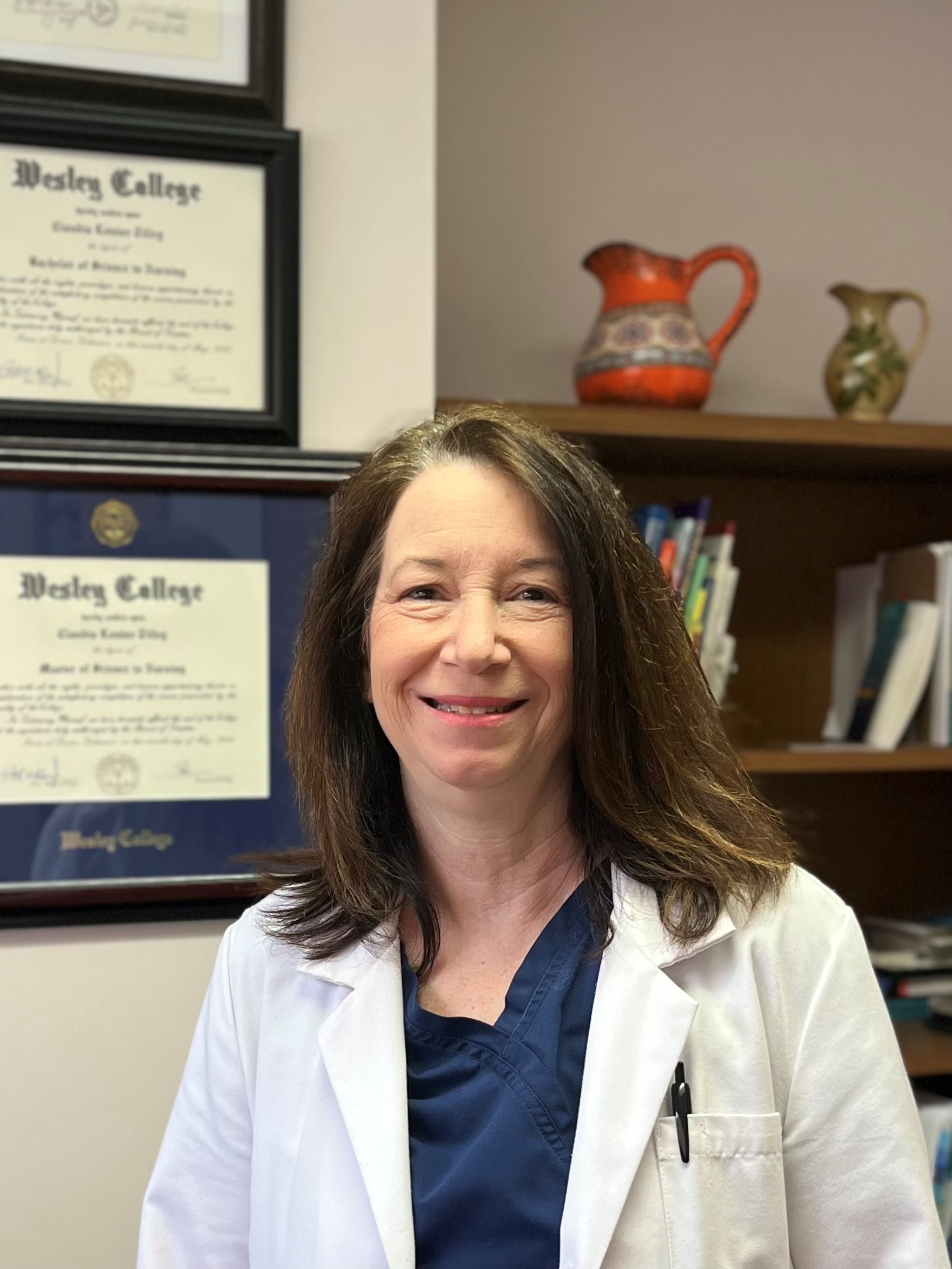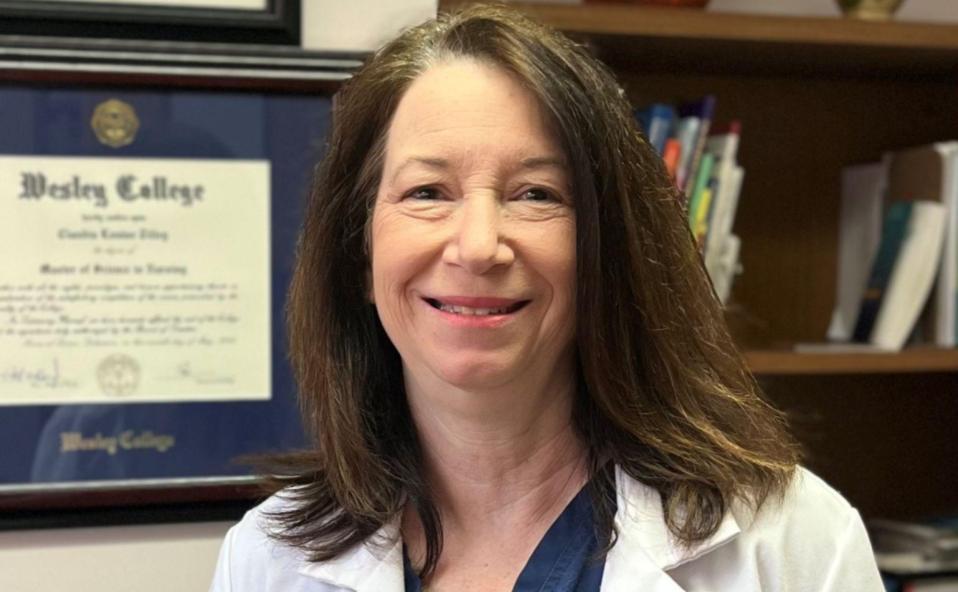
Claudia Tilley, MSN, RN, APRN-CNS, AGCNS-BC, Patient Education Specialist and Diabetes Educator
Claudia Tilley, MSN, RN, APRN-CNS, AGCNS-BC, patient education specialist and diabetes educator for University of Maryland Shore Regional Health, was instrumental in the passing of new legislation allowing clinical nurse specialists (CNS) in Maryland the authority to prescribe medication. Nurses who have achieved the CNS certification have had the legal authority to prescribe in 39 states, including Maryland’s border states – Delaware, Pennsylvania, Virginia and West Virginia, as well as the District of Columbia.
A clinical nurse specialist is a master’s or doctorate-prepared nurse who is board certified by a national accrediting body and licensed as an Advanced Practice Registered Nurse (APRN) on the state level. There are over 300 clinical nurse specialists in Maryland.
The CNS prescribing legislation (Senate Bill 213 and House Bill 278) which will go into effect October 1, was signed into law by Governor Wes Moore last month. Visit umshoreregional.org/Senate-Bill0213 to read the complete bill.
“Claudia worked tirelessly to move this legislation forward,” said Kathy Elliott, Director, Professional Nursing Practice/Magnet Program. “Without her hard work, this legislation may never have come to life.”
The new legislation allows the CNS profession to practice at the full extent of their training and licensure, and help fill gaps in care and improve health outcomes for the communities served, including those on Maryland’s Eastern Shore.
“I am very proud to say I played a part of this historic endeavor to advance nursing and the CNS profession in Maryland,” said Tilley.
Through the Chesapeake Bay Affiliate of the National Association of Clinical Nurse Specialists and the Maryland Academy of Advanced Practice Clinicians, Tilley participated in a work group with 11 other CNS nurses, two nurse practitioners and a lobbyist who provided guidance.
Tilley worked with the Maryland General Assembly to promote the bill and educate legislators, sending emails and providing written testimony for committee hearings in both chambers of the Maryland General Assembly. She spoke personally with Delegate Thomas Hutchinson, who represents Caroline, Dorchester, Talbot, and Wicomico counties, to explain the importance of the bill with regard to improving patient outcomes. In February, Tilley presented oral testimony at the House of Delegates Health and Government Operations Committee hearing in Annapolis.
Support was also secured from the National Association of Clinical Nurse Specialists, Maryland Board of Nursing, Maryland Nurses Association, Maryland APRN groups and other organizations, including Johns Hopkins Health System, University of Maryland Medical System and AARP.

Maryland Governor Wes Moore signs the legislation enabling clinical nurse specialists to prescribe medication.
About University of Maryland Shore Regional Health
As part of the University of Maryland Medical System (UMMS), University of Maryland Shore Regional Health is the principal provider of comprehensive health care services for more than 170,000 residents of Caroline, Dorchester, Kent, Queen Anne’s and Talbot counties on Maryland’s Eastern Shore. UM Shore Regional Health’s team of more than 2,200 employees, medical staff, board members and volunteers works with various community partners to fulfill the organization’s mission of Creating Healthier Communities Together.
About the University of Maryland Medical System
The University of Maryland Medical System (UMMS) is an academic private health system, focused on delivering compassionate, high quality care and putting discovery and innovation into practice at the bedside. Partnering with the University of Maryland School of Medicine and University of Maryland, Baltimore who educate the state’s future health care professionals, UMMS is an integrated network of care, delivering 25 percent of all hospital care in urban, suburban and rural communities across the state of Maryland. UMMS puts academic medicine within reach through primary and specialty care delivered at 11 hospitals, including the flagship University of Maryland Medical Center, the System’s anchor institution in downtown Baltimore, as well as through a network of University of Maryland Urgent Care centers and more than 150 other locations in 13 counties. For more information, visit www.umms.org.


Write a Letter to the Editor on this Article
We encourage readers to offer their point of view on this article by submitting the following form. Editing is sometimes necessary and is done at the discretion of the editorial staff.